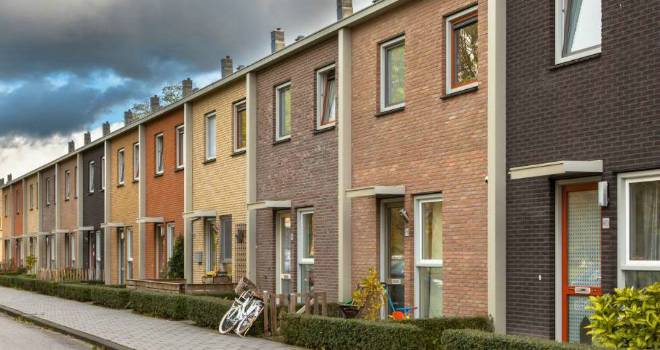
More than six babies have been born in England for every new home built since 2010, with the combined effect of higher birth rate, longer life expectancy and increased migration blamed for the increasing housing shortage.
With England’s birth rate having reached a 41-year high in 2012, the struggles of the construction industry mean for every new home built since the last election, twice as many children (6.1) have been born than during the 1950s (2.9), 1960s (2.7) and 1970s (2.4).
Among local government districts in England, the borough of Hyndburn in Lancashire emerges with the highest rate of births compared to new homes built since 2010. At 34.1 births for each new home, this is more than five and a half times the national average (6.1). At the opposite end of the scale, South Somerset has the lowest ratio of 1.1 births to new homes.
Sevenoaks in Kent has experienced the greatest rate of overall population growth compared to new house building with almost 23 (22.9) additions to its population for every new home built since 2010.
Simon Crone, vice president for mortgage insurance – Europe at Genworth, commented:
“These findings are a major cause for concern when you think of the struggle that today’s thirty-somethings face to get on the housing ladder – despite being born in an era where the rate of births to new house building was far lower. The first time buyers of the future will come up against even greater competition from a larger number of their peers unless we move on from short term fixes to the housing market.
“Alongside planning rules, part of the discussion must focus on first time buyer funding issues that refuse to go away. Help to Buy equity loans have temporarily made it easier to raise a deposit and stimulated house building in the process. However, they are not a long term answer– especially when funding has been temporarily exhausted in Scotland.
“High loan to value mortgages traditionally support a large proportion of new home sales, and give builders confidence to increase production in the knowledge that the necessary finance is available to crystallise demand. But this part of the market is also currently relying on a short-term State prop though the Help to Buy mortgage guarantee.
“Having recognised these problems, it is time for government to work with industry to permanently restore the first time buyer market as part of a wider overhaul to fix our housing crisis.
“Housing and homeownership will be one of the defining issues of the upcoming election. Putting long term measures in place must be top of the priority list for the next government. It will take a concerted effort to bring an end to the current crisis but the hopes of future generations of first time buyers are relying on a successful outcome.”





